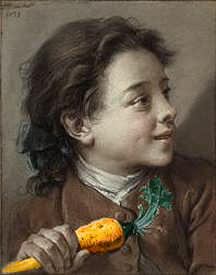9.26.2007
 Its an unfair fight! Yet, I have to disagree with one of Howard Gardner's points in Five Minds for the Future. To be clear, overall, it is an important and fascinating read (and I'll get to that in a second). However, Gardner (attributing Mihaly Csikszentmihalyi) describes creativity in a way in which I'm not terribly comfortable. This the part with which I disagree:
Its an unfair fight! Yet, I have to disagree with one of Howard Gardner's points in Five Minds for the Future. To be clear, overall, it is an important and fascinating read (and I'll get to that in a second). However, Gardner (attributing Mihaly Csikszentmihalyi) describes creativity in a way in which I'm not terribly comfortable. This the part with which I disagree:
According to Csikszenmtihalyi, creativity occurs when- and only when- an individual or group product generated in a particular domain is recognized by the relevant field as innovative and, in turn, sooner or later, exerts a genuine, detectable influence on subsequent work in that domain. This perspective applies to the full range of creations, across spheres and across various degrees of innovation (from the littlest c to the biggest C). (p.81)This seems to me to be a surprisingly narrow and elitist view of creativity! I could even (somewhat) agree with his point if he didn't add the caveat about 'the littlest c'. He goes with an example of life in the United States in the 1980s:
Everyone wanted to be creative: too many persons believed that they were creative, even though they had scarcely begun to master a domain, and even though no expert in the field would have judged them as creative. (p.85)It sounds like he is describing innovation, not creativity. If not, this must ring false to any art teacher who has seen the burst of creative energy in a student who has simply managed to discover that red and blue make purple for the first time. However, to be fair, this complaint is indeed just a tangent. You don't need to accept or agree with his definition of creativity to appreciate his overall message.
Five Minds is an interesting book to read alongside Daniel Pink's A Whole New Mind- as they take a similar approach to preparing the next generation of thinkers, and even reach similar conclusions. Pink identifies six senses, Design, Story, Symphony, Empathy, Play, and Meaning. The cultivation of these senses, he claims, will prepare people with the types of skills that will be most needed in what he calls the "conceptual age". As opposed to the 'information age' which is about the control and accumulation of knowledge, the 'conceptual age' is about how that information is understood and managed. Gardner identifies five minds, and there is some overlap with Pink's senses (although there is some conflict as well) - the disciplined mind, the synthesizing mind, the creating mind, the respectful mind, and the ethical mind. Obviously, the attributes of Gardner's 'respectful' and 'ethical' minds have some similarities with the attributes Pink ascribes to 'empathy'. They also reach similar conclusions in their ideas about the 'synthesizing mind' (Gardner), and 'symphony' (Pink). They diverge slightly more in other areas- Gardner refers to the 'creative mind' as one of the five, where Pink identifies creativity as a basis for all six of his senses.
The critical conclusion that both books reach is the same- there is a new skill set that will define success in the 21st century. More importantly, whether we refer to these disciplines as "minds" or "senses" - it is clear that traditional modes of learning are no longer adequate for navigating an interconnected and rapidly changing world. Both Gardner and Pink suggest that these new perspectives are necessary for progressing forward.
Both of these books hold deep significance for all teachers. They both acknowledge a seismic shift in the world- politically, technologically, and globally. Specifically, they embrace for all education, the kind of learning that takes place in art classrooms- an unending investigation into new possibilities.
Tags: Books, Daniel Pink, Howard Gardner, Pedagogy
1 Comment:
Subscribe to:
Post Comments (Atom)















Thanks,
Jan